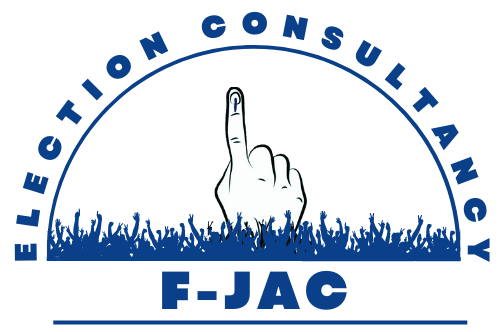Introduction
In the competitive landscape of political campaigns, understanding your strengths, weaknesses, opportunities, and threats (SWOT) is crucial for success. Political campaigns face unique challenges, such as fluctuating public sentiment and dynamic competitor actions, which make a robust SWOT analysis even more relevant. Conducting a thorough SWOT analysis not only informs strategic decision-making but also helps mitigate risks that could derail your campaign. This guide will walk you through the importance of SWOT analysis in political campaigns and provide actionable steps for effective implementation.

What is a SWOT Analysis in the Context of Political Campaigns?
SWOT analysis is a strategic planning tool that evaluates internal and external factors affecting a campaign. It consists of four components:
- Strengths: Attributes that give your campaign an advantage over competitors, such as a charismatic candidate, strong grassroots support, or a well-known local figure.
- Weaknesses: Areas where the campaign is lacking or vulnerable, such as limited funding, low name recognition, or a controversial past.
- Opportunities: External factors that the campaign can leverage to its advantage, such as a favorable political climate, demographic shifts, or emerging issues that resonate with voters.
- Threats: External challenges that could pose risks to the campaign, such as negative press, emerging competitors, or changing voter preferences.
By understanding these components, campaigns can make informed choices that enhance their chances of success.
Importance of Conducting a SWOT Analysis for Political Campaigns
- Strategic Decision-Making: A SWOT analysis helps shape campaign strategy by identifying where to allocate resources and which areas to focus on, ensuring that efforts are concentrated where they are most likely to yield results.
- Risk Mitigation: Recognizing potential threats and weaknesses early in the campaign can prevent crises. For instance, if a candidate is facing negative press due to past statements, a proactive response strategy can help manage public perception.
- Adapting to the Political Environment: By continuously scanning for opportunities, campaigns can remain agile, allowing them to pivot quickly and take advantage of emerging trends or shifts in voter sentiment.
Conducting a SWOT Analysis – Step-by-Step Guide
- Internal Analysis (Strengths and Weaknesses)
- Evaluate Resources: Assess the candidate’s public image, financial resources, and existing voter base. This includes identifying key messaging and outreach channels, such as social media platforms and community engagement initiatives.
- Identify Organizational Structure: Analyze the campaign team’s strengths and weaknesses, including skills, experience, and team cohesion.
- External Analysis (Opportunities and Threats)
- Political Landscape: Analyze the current political climate, competition, and voter sentiments. This includes understanding which issues are resonating with voters, such as healthcare or education reform.
- External Challenges: Identify potential legal issues, economic conditions, and demographic changes that may affect the campaign, like shifts in voting behavior among young voters.
- Data Collection
- Gather relevant data through surveys, polls, and analysis of past election results. Tools like online survey platforms (e.g., SurveyMonkey) or social media analytics can provide insights into voter preferences and behaviours.
- Team Brainstorming
- Involve key stakeholders, including campaign staff and advisors, in the brainstorming process to ensure a well-rounded view of the internal and external factors at play.
Case Studies of Successful SWOT Applications in Political Campaigns
A notable example is the 2016 U.S. presidential campaign, where the candidate’s strengths—such as a robust grassroots network and effective use of social media—were leveraged to counter weaknesses like a controversial platform. The campaign effectively identified opportunities presented by demographic shifts among young voters, actively engaging them through tailored messaging and platforms. Additionally, they managed threats from opponents by adjusting their strategy and communication style in real-time, ultimately leading to a successful campaign.
Utilizing SWOT Analysis for Ongoing Campaign Adjustments
- Flexibility in Strategy: Regularly updating the SWOT analysis throughout the campaign is crucial. Consider conducting reviews monthly or after significant events, such as debates or major rallies, to ensure the campaign remains responsive to changing dynamics.
- Monitoring Competitors: Continuously tracking competitors’ strengths and weaknesses allows campaigns to adjust their strategies accordingly. For instance, if an opponent gains traction on an issue, it may necessitate a reevaluation of your campaign’s position.
- Responding to Changes: Quickly adapting to opportunities and threats enables campaigns to maintain a competitive edge. For example, if a new issue arises that resonates with voters, integrating it into your platform can attract support.
How SWOT Helps Campaigns Manage Risk
- Preventing Strategic Blunders: Identifying internal weaknesses early allows campaigns to avoid costly missteps. For instance, recognizing a lack of voter engagement in certain demographics can lead to targeted outreach efforts.
- Anticipating Opposition Strategies: By being aware of potential threats from the opposition, campaigns can prepare countermeasures and maintain a proactive stance. This might include crafting responses to anticipated negative ads or public scrutiny.
- Risk Assessment and Contingency Plans: A well-conducted SWOT analysis enables campaigns to create contingency plans for various scenarios, ensuring preparedness for unexpected challenges, such as sudden changes in public opinion.
Conclusion
Conducting a SWOT analysis is an invaluable exercise for political campaigns. It empowers teams to make informed decisions, reduce risks, and capitalize on opportunities, ultimately enhancing the chances of success at the polls. By staying attuned to the political landscape and regularly updating their analyses, campaigns can navigate the complexities of electoral politics with greater confidence.
Call to Action
Ready to take your campaign to the next level? Implement a comprehensive SWOT analysis today. At F-JAC Election Consultancy (www.electionconsultancy.com), we specialise in providing tailored SWOT reports and risk assessments designed to meet your campaign goals. Contact us to learn how we can help you strategize effectively!

